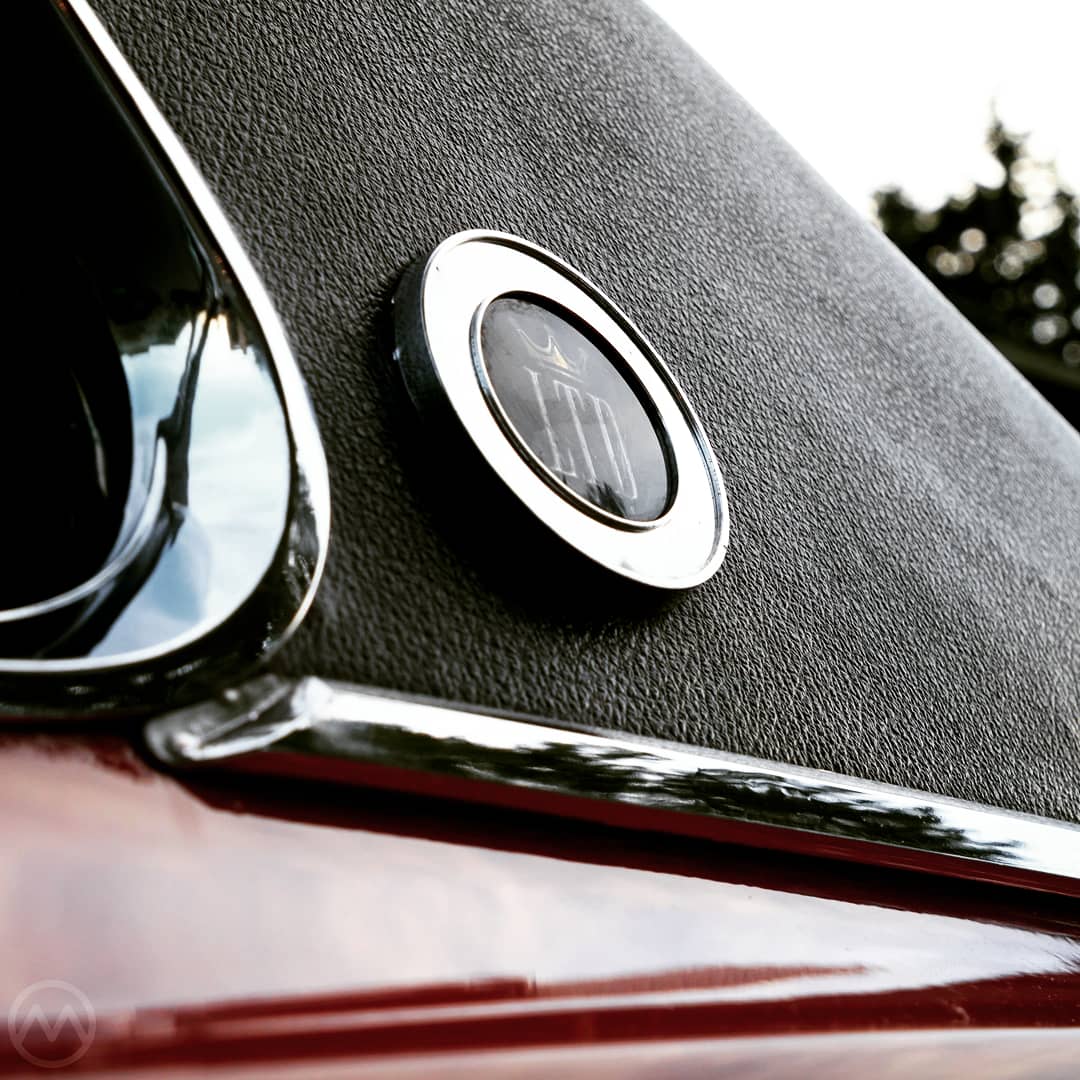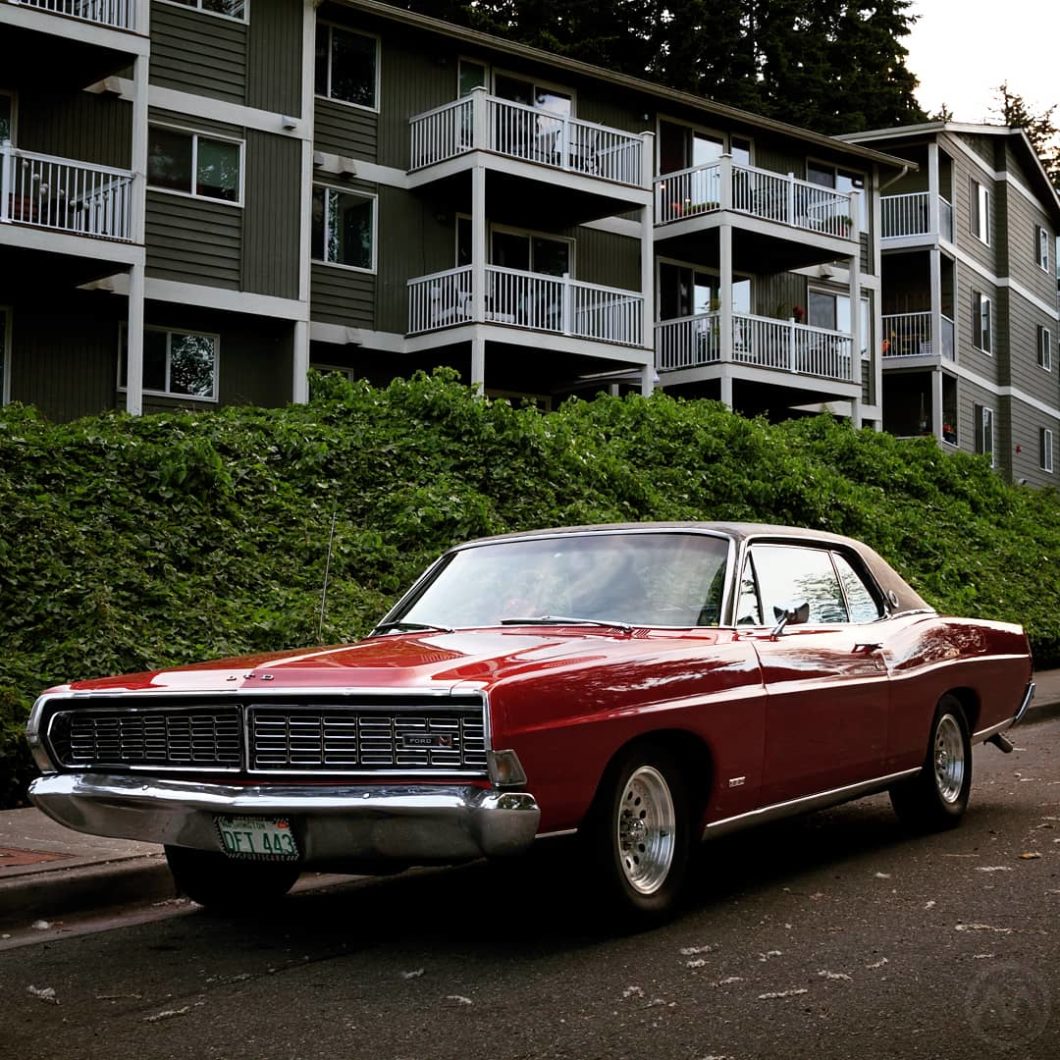Over the course of about 25 years, the LTD name filtered through dozens of family Fords, from the biggest and broughamy-est land yachts of the 1970s to a midsize Fox variation in in the 1980s and finally, living on as a part of the “LTD Crown Victoria” equation until 1991.
Millions upon millions were sold, a testament to just how successful the original idea was. But starting in 1968, the LTD began following a long Detroit tradition of introducing a new halo model and then gradually turning it into something more mainstream.
It’s a 1968 Ford LTD we see here today, and this particular year is fairly unique. It’s right at the end of the run of the original LTD design but also previews what was to come later. 1968 is the year that the LTD started to take over the entire big Ford universe, but it was also still an island unto itself.
The LTD started as an unexpected luxury version of the regular big Fords. Being a family car, the LTD is less well-remembered than some of the more high-profile Ford inventions of the 1960s, like the Mustang, Bronco, and GT40. But the LTD idea sold far more cars than those machines did. The 1970s big Ford platform is the second-best selling car in Ford’s history and one of the best selling worldwide.
But if the LTD is best remembered for something other than being an omnipresent family car in the 1970s, it’s that it kick-started the “Brougham” concept, a regular car that was gilded like a luxury machine and priced within reach of mass-market buyers. The first LTD debuted in 1965, and by the time this ‘68 was built, had inspired imitators from GM, Chrysler, and even AMC.
The First Ford LTD
The original “Galaxie LTD” of 1965 had come as a surprise to both buyers and critics. A new option package and then top trim on the Galaxie, it was not substantively different from the other big Fords in any mechanical respect. Nor was it the most expensive big Ford of the time, that honor fell to the mighty Galaxie 7-Litre, introduced in 1966.
The LTD cost about $400-500 more than the regular Galaxie, enough to buy a good used car in those days. For that money buyers got lots of differences they could see and feel. There were walnut-like appliques, a host of courtesy lights in areas where no Ford had ever had them, and special fabrics. A new material called nylon tricot but which Ford designers referred to as “Panty Cloth” draped the seats. Deep carpets, vinyl tops, special badges, and lots of gear comprised the rest of the package.
Unlike the regular big Fords, a V8 and automatic were standard, and buyers could select from Ford’s range of eights all the way up the R-code 427 if they so chose. (Most did not, and you had to be friends with your dealer to get that engine).

There had always been loaded big Fords, but the LTD, sprung from the market-reading mind of Lee Iacocca, was specifically sold on “luxury,” with Lincoln-like extras. “LTD” did not stand for anything in particular, Ford said. “Limited” was a Buick trademark, so Ford couldn’t use it, but the inference was clear.
Costing little more to build than the humble Ford Custom, the LTD was a low-overhead, high-profit recipe, like GMC’s Yukon Denali today. It costs the same amount to build a Tahoe or a Yukon Denali, but guess which one costs more? This particular Iacocca method would prove hugely successful at both Ford and Chrysler, and was soon seen again on the Lincoln Continental MkIII.
Trickle-Down Economics
More than 100,000 Galaxie LTDs were sold in ‘65, and it became its own nameplate in 1967. By then it had inspired Chevy’s Caprice, Plymouth’s VIP, and AMC’s Ambassador DPL, each a variation on the same basic concept.
This put the LTD in direct competition with Mercury’s Monterey and Montclair, though it was still not as pricey as the fancy Park Lane or any Lincoln. After some years of struggle, Mercury had finally come back to decent volumes, and the LTD probably did siphon off some buyers. In 1967, Mercury debuted its own version, the Marquis, first as a coupe only.
The LTD would evolve quickly in the late 1960s and early 1970s as Ford moved to spread the magic around.
In 1968, the car was heavily restyled even though a complete redesign would be introduced for 1969. The stacked headlight look of 1965-67 was gone, replaced by a detailed front end with hidden headlamps and grid-like details. There was similar lattice-work detailing on the rear of the car, a frilly detail no doubt approved by Ford design boss Gene Bordinat, who preferred ornate details.
In that year, the LTD still stood on its own, with the traditional Ford names below it, but it was the first year where the LTD began to splinter into sub-models, starting with the LTD Brougham package, which made some of the previously-standard equipment into a package. It also made automatic transmissions an extra cost item for the first time on the LTD, though virtually all buyers opted for it and autos were a required option on the bigger V8s.
The ‘68 look previewed some of the changes for 1969, but as a result of that new design, the 1968 models are rather unique, with some of the older elements and some of the newer ones. As the last of the original generation, however, it had some advantages over the later LTDs.
In the 1960s, the LTD came only as a formal-roofed sedan (hardtop or pillared) or two-door hardtop. Two-door big cars were much more common then, and the LTD could still do a fair imitation of a muscle machine when fitted with a 428-cid V8, a kind of updated version of the howitzer-like (and canceled after 1967) Galaxie 7-Litre.

Later LTDs would be much heavier, but in 1968 the 2-door weighed only about 3,600 lbs. Not light, but they’d weigh half a ton more only six years in the future. That meant pretty good performance for a fancy, frilly big car, and the LTD could be had with V8s from 302 to 428-cid, and a few were even built with four-speeders and the 428 “Q Code” engine, underrated at 335hp.
The 1969 full-size Ford redesign brought a much heavier chassis, closer to Mercury in appearance and feel, and that design grew and grew during the 1970s.
Future LTDs would splinter into many more variations in that decade and by 1976 all big Fords were LTDs, which gradually diluted the impact of the name.
In 1977, there were two: the big full-size LTD and the former “intermediate” Torinos, recast as the LTD II. After the Fox-based LTD in the 1980s, the “LTD Crown Victoria” name was the last use, in 1991. The LTD name was also used overseas on unrelated cars, primarily in Australia. The final Australian LTD was built in 2007.

